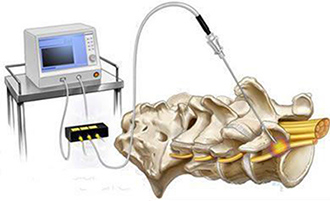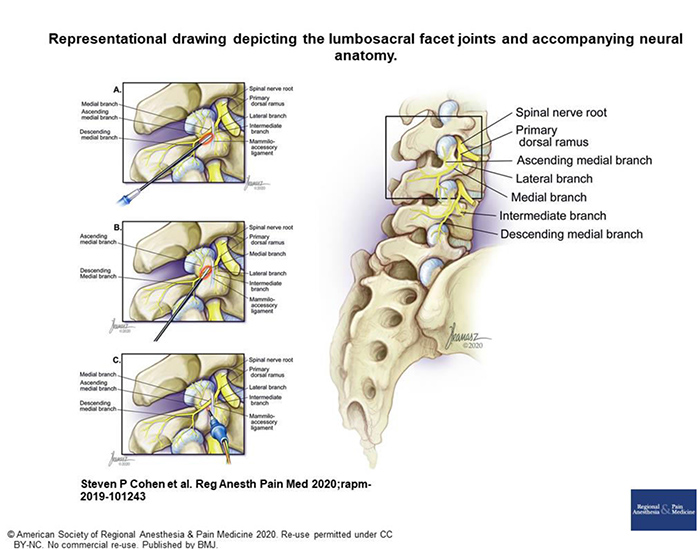Rhizolysis
 Facet joints are pairs of small joints located on either side of your spine. They are one of the many structures that keep your spine stable and flexible allowing movements like bending and twisting. Sometimes these joints can become irritated and this leads to pain. Facet joints are supplied by the medial branch nerves and these nerves transmit the pain signals.
Facet joints are pairs of small joints located on either side of your spine. They are one of the many structures that keep your spine stable and flexible allowing movements like bending and twisting. Sometimes these joints can become irritated and this leads to pain. Facet joints are supplied by the medial branch nerves and these nerves transmit the pain signals.
There are 3 procedures related to facet joints:
- diagnostic medial branch blocks
- therapeutic medial branch rhizolysis
- facet joint cortisone injections.
All 3 procedures need to be performed using X-ray guidance so that we can see the correct position of the needle. The procedure is performed by a Pain Specialist in the operating room.

Medial Branch Blocks
A small quantity of local anaesthetic is injected near the nerve supplying the facet joint. This block is usually performed as a test to determine whether you might benefit from therapeutic facet joint rhizolysis.
It is a diagnostic block as it will tell us how much of your back pain comes from the facet joints versus other structures.
Rhizolysis
If deemed suitable following the medial branch blocks, you will have therapeutic medial branch rhizolysis at a later date. A radiofrequency needle is placed near the medial branch nerves and radiofrequency is used to heat the nerves to disrupt their ability to transmit pain signals. A machine called a radiofrequency machine will be used to deliver this via a special needle.
Pain reduction can last 12-18 months, therefore it is our first-line option to treat pain arising from facet joints.
Facet Joint Cortisone Injection
A combination of local anaesthetic and steroid is injected around the facet joint to provide pain relief. This is the second-line option for treating pain arising from facet joints as it is not as long-lasting as rhizolysis although much simpler, easier and faster to perform.
Risks and Complications
These procedures are relatively safe. The potential side effects are:
- Bleeding and infection
- Temporary increase in pain. This is particularly so after rhizolysis and facet joint injection. Take regular simple analgesics such as Paracetamol for the first few days with application of heat or cold packs.
- Discomfort at the site of injection.
Procedure:
- The entire procedure will be explained to you and the doctor will ask you to sign a consent form.
- You will be asked to get partially undressed and put on a hospital gown.
- In the operating theatre, you will be asked to lie face down on the operating table and the area will be cleaned with antiseptic.
- The X-ray machine is used to make sure the needle is in the right position near the facet joint or medial branch nerves.




